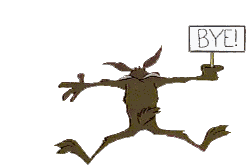OS@M@
New member
Plague Riot (Чумной бунт in Russian) was a riot in Moscow between September 15 and September 17 of 1771, caused by an outbreak of bubonic plague.
The first signs of plague in Moscow appeared in the late 1770, which would turn into a major epidemic in the spring of 1771. The measures undertaken by the authorities, such as creation of forced quarantines, destruction of contaminated property without compensation or control, closing of public baths etc., caused fear and anger among the citizens. City's economy was mostly paralyzed due to the fact that many factories, markets, stores, and administrative buildings had been closed down. All of this was followed by acute food shortages, causing deterioration of living conditions for the majority of the Muscovites. Dvoryane and well-off citizens left Moscow due to the plague outbreak.
The first outbursts of mass protest against the measures undertaken by the authorities took place on August 29 and September 1 in a neighborhood of Lefortovo. By early September, the rumors of an imminent uprising had already been circulating. An attempt by the Archbishop Ambrosius of Moscow to prevent the citizens from gathering at the Icon of the Virgin Mary of Bogolyubovo (Икона Боголюбской Богоматери) in Kitai-gorod as a quarantine measure served as an immediate cause for the Plague Riot. On September 15, huge crowds of Muscovites began to flow towards the Red Square at the sound of the alarm bell. Pushing aside a military unit, they burst into the Kremlin and destroyed the Chudov Monastery (archbishop's residence) and its wine cellars. Archbishop Ambrosius managed to escape to the Donskoy Monastery.
On September 16, the riot gained in strength. Angry citizens captured the Donskoy Monastery, killed Archbishop Ambrosius, and destroyed two quarantine zones (Danilov Monastery and the one beyond the Serpukhov Gates). In the afternoon, most of the rebels approached the Kremlin and were met by a number of military units. The crowd demanded the surrender of Lieutenant General Pyotr Yeropkin, who had been overseeing the affairs of Moscow after Pyotr Saltykov's departure. As soon as the Muscovites tried to attack the Kremlin's Spasskiye Gates, the army opened fire with buckshots, dispersing the crowd and capturing some of the rebels.
On the morning of September 17, around 1000 people gathered at the Spasskiye gates again, demanding the release of captured rebels and elimination of quarantines. The army managed to disperse the crowd yet again and finally suppressed the riot. Some 300 people were brought to trial. A government commission headed by Grigory Orlov was sent to Moscow on September 26 to restore order. It took some measures against the plague and provided citizens with work and food, which would finally pacify the people of Moscow. The commission improved services in quarantines, put an end to the burning of property, reopened public baths, permitted trade, increased food deliveries, and organized public works. At the same time, the commission was engaged in prosecuting those, who had taken part in the Plague Riot. Four of them were executed, 165 adults and 12 teenagers were subjected to punishment. With the onset of cold weather, the outbreak began to subside. Around 200,000 people died in Moscow and its outskirts during the plague.
There was another unlikely convict - the church bell that was used to start the alarm. By the order of Catherine II an executor cut the tang from the bell. For more than thirty years the silent bell hung on the bell tower. Eventually in 1803 it was removed and sent to the Arsenal and in 1821 to the Kremlin Armoury.
The first signs of plague in Moscow appeared in the late 1770, which would turn into a major epidemic in the spring of 1771. The measures undertaken by the authorities, such as creation of forced quarantines, destruction of contaminated property without compensation or control, closing of public baths etc., caused fear and anger among the citizens. City's economy was mostly paralyzed due to the fact that many factories, markets, stores, and administrative buildings had been closed down. All of this was followed by acute food shortages, causing deterioration of living conditions for the majority of the Muscovites. Dvoryane and well-off citizens left Moscow due to the plague outbreak.
The first outbursts of mass protest against the measures undertaken by the authorities took place on August 29 and September 1 in a neighborhood of Lefortovo. By early September, the rumors of an imminent uprising had already been circulating. An attempt by the Archbishop Ambrosius of Moscow to prevent the citizens from gathering at the Icon of the Virgin Mary of Bogolyubovo (Икона Боголюбской Богоматери) in Kitai-gorod as a quarantine measure served as an immediate cause for the Plague Riot. On September 15, huge crowds of Muscovites began to flow towards the Red Square at the sound of the alarm bell. Pushing aside a military unit, they burst into the Kremlin and destroyed the Chudov Monastery (archbishop's residence) and its wine cellars. Archbishop Ambrosius managed to escape to the Donskoy Monastery.
On September 16, the riot gained in strength. Angry citizens captured the Donskoy Monastery, killed Archbishop Ambrosius, and destroyed two quarantine zones (Danilov Monastery and the one beyond the Serpukhov Gates). In the afternoon, most of the rebels approached the Kremlin and were met by a number of military units. The crowd demanded the surrender of Lieutenant General Pyotr Yeropkin, who had been overseeing the affairs of Moscow after Pyotr Saltykov's departure. As soon as the Muscovites tried to attack the Kremlin's Spasskiye Gates, the army opened fire with buckshots, dispersing the crowd and capturing some of the rebels.
On the morning of September 17, around 1000 people gathered at the Spasskiye gates again, demanding the release of captured rebels and elimination of quarantines. The army managed to disperse the crowd yet again and finally suppressed the riot. Some 300 people were brought to trial. A government commission headed by Grigory Orlov was sent to Moscow on September 26 to restore order. It took some measures against the plague and provided citizens with work and food, which would finally pacify the people of Moscow. The commission improved services in quarantines, put an end to the burning of property, reopened public baths, permitted trade, increased food deliveries, and organized public works. At the same time, the commission was engaged in prosecuting those, who had taken part in the Plague Riot. Four of them were executed, 165 adults and 12 teenagers were subjected to punishment. With the onset of cold weather, the outbreak began to subside. Around 200,000 people died in Moscow and its outskirts during the plague.
There was another unlikely convict - the church bell that was used to start the alarm. By the order of Catherine II an executor cut the tang from the bell. For more than thirty years the silent bell hung on the bell tower. Eventually in 1803 it was removed and sent to the Arsenal and in 1821 to the Kremlin Armoury.



